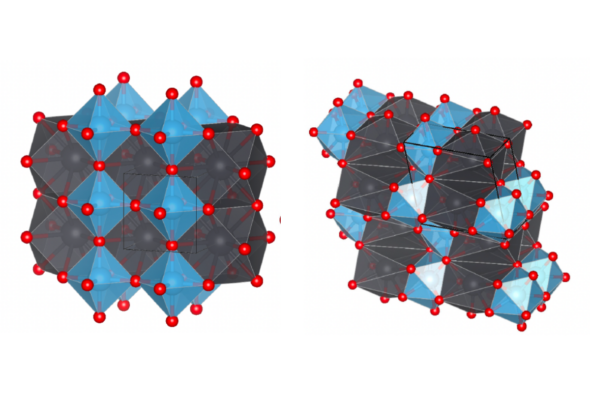Experiments verify high-pressure properties of materials used in many technologies
New experiments by UIC scientists could advance technologies that rely on materials with an unusual property called ferroelectricity.
Ferroelectric materials can spontaneously polarize and stay polarized until they’re exposed to an electric field. These materials also change shape in electric fields and can generate electricity under stress. Engineers have found ways to use this behavior in technologies for medical imaging, sonar, computer memory and other devices.

Over the past two decades, scientists with the Chicago/DOE Alliance Center led by UIC Professor Russell Hemley, Liberal Arts and Sciences Distinguished Chair in the Natural Sciences, have studied a ferroelectric material called lead titanate. Lead titanate is the basis of a new class of chemically complex ferroelectric materials with superior properties that have driven many technologies, said Muhtar Ahart, research professor in the UIC physics department.
“In the last 20 to 30 years, the field has seen tremendous advances,” Ahart said. “Twenty years ago, if you went to the hospital, the ultrasound system probably took up a whole room. Now it’s handheld, and some devices can even hook up to your phone and you can see the image.”
In 2008, a group led by Ahart published a paper on lead titanate in Nature that has been cited nearly 1,000 times. Now, a new paper in Physical Review Letters disproves a perplexing theory about the material discussed in that earlier work, opening the door to better designs.
Specifically, the ferroelectric properties of lead titanate disappear at high pressures, but some quantum mechanical calculations suggested that this behavior would reappear at even higher pressures. Using a laser-based method called second harmonic generation, the researchers tested lead titanate at pressures up to 100 gigapascals — 1 million times the atmospheric pressure at sea level.
The experiments found no evidence of ferroelectricity at these megabar pressures. Those results prompted theorist Ronald Cohen of the Carnegie Institution, the lead author of the recent paper, to revisit the quantum mechanical calculations reported previously.
The new, more extensive calculations predict that lead titanate changes to new crystal structures under very high-pressure conditions. This improved understanding of the structure will help scientists design new ferroelectric materials with even better properties. It also suggests the existence of as-yet-undiscovered natural minerals.
“The prediction of new structures of the material at high pressure is an important achievement,” Hemley said. “These new structures with related compositions could exist as very high-pressure minerals deep within the mantle of Earth or of super-Earth planets outside of our solar system.”
